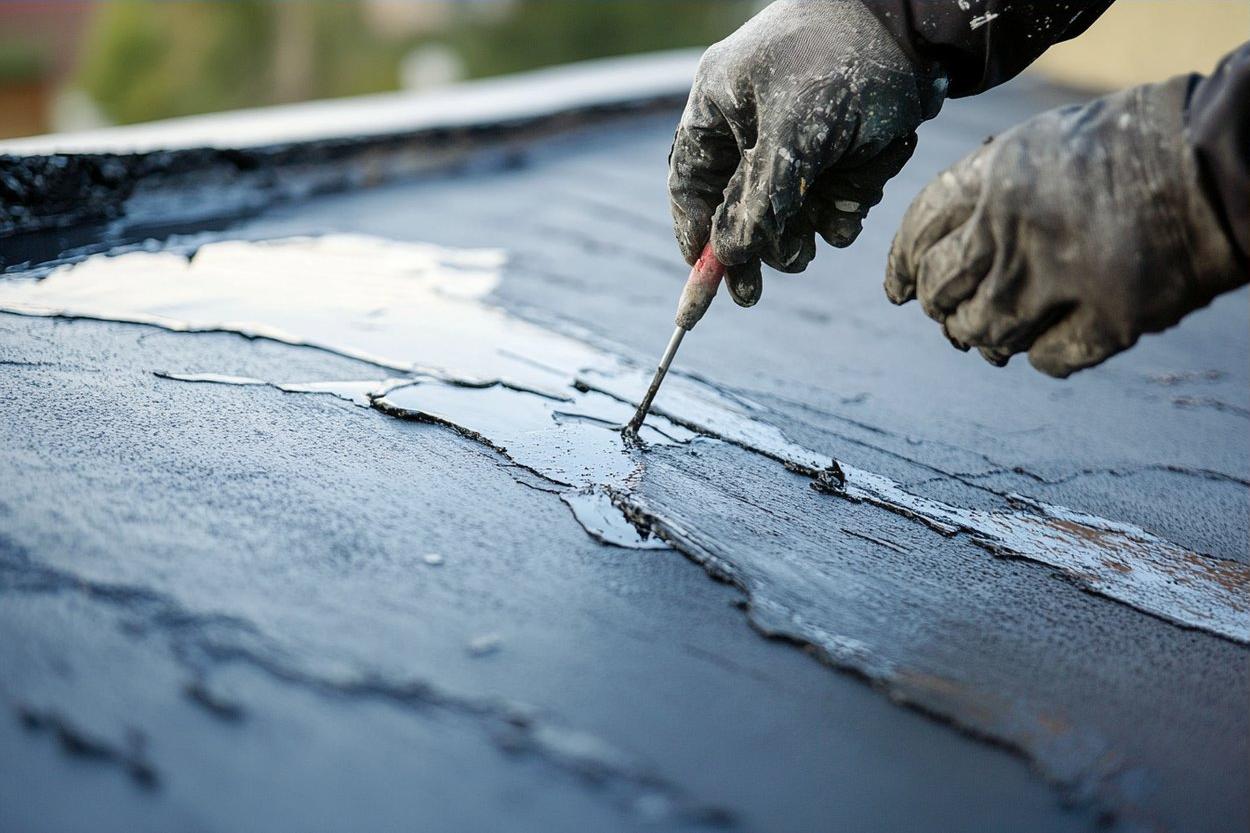Improving Energy Performance on Low-Slope Roof Assemblies
Low-slope roof assemblies present specific opportunities to reduce heating and cooling demand when renovated thoughtfully. This article outlines practical measures—from insulation upgrades to membrane selection, drainage, and ventilation improvements—that can raise thermal performance, extend lifespan, and reduce operating energy for commercial and residential flat roofs.

Low-slope roofs are common on commercial buildings and some modern residences. Because these assemblies sit close to occupied spaces, heat transfer through the roof significantly affects a building’s annual energy use. Improving energy performance on low-slope roof systems requires a combination of thermal upgrades, careful material selection, attention to moisture and drainage, and regular maintenance. The strategies below focus on durable, verifiable approaches—insulation enhancement, membrane choices, waterproofing and leakproofing tactics, effective drainage and ventilation, routine inspection and maintenance, and guidance on finding local contractors and material suppliers.
How does insulation affect energy performance?
Upgrading insulation is often the most direct way to lower heat loss or gain through a low-slope roof. Increasing thermal resistance (R-value) reduces conductive heat flow in winter and limits heat transfer in summer. Options include adding rigid insulation boards above the deck (a common retrofit), installing tapered insulation to improve drainage and avoid ponding, or using insulated roof panels where compatible. When retrofitting, consider continuous insulation above the roof deck to reduce thermal bridging at fasteners and perimeter details. Proper vapor control and attention to condensation risk are essential when increasing roof thermal resistance; integrate insulation work with a moisture-management plan and an inspection for existing wet materials prior to replacement.
Which membrane options improve efficiency?
Roofing membranes influence reflectivity, durability, and compatibility with insulation systems. Single-ply membranes such as TPO, PVC, and EPDM are widely used; TPO and PVC can offer reflective surface options to reduce solar heat gain, while EPDM provides a durable, often lower-cost choice that can be coated for increased reflectivity. Metal roofing overlays and fluid-applied membranes can also be used in specific retrofit scenarios. When selecting a membrane, consider thermal properties, lifecycle performance, and how the membrane integrates with insulation and waterproofing layers. Proper flashing and secure attachment methods help maintain continuous performance and prevent air leaks that undermine thermal gains.
How do waterproofing and leakproofing interact with energy goals?
A roof that allows water intrusion or retains wet insulation will see degraded thermal performance and shortened lifespan. Waterproofing and leakproofing ensure insulation maintains its designed R-value and that air barriers remain intact. Common approaches include fully adhered membranes, reinforced roofing felts, and protective cover boards that separate insulation from mechanical damage. For low-slope roofs, addressing joints, penetrations, and perimeter connections is critical; failures at these details commonly lead to leaks. Selecting materials rated for the expected rooftop traffic and exposure, and ensuring proper slope or tapered insulation to avoid ponding, will support long-term energy performance.
How does drainage and ventilation matter for low-slope roofs?
Effective drainage prevents ponding water, which accelerates material deterioration and fosters heat loss through wet insulation. Design strategies include creating positive slope with tapered insulation, ensuring clear internal or external drains, and maintaining scuppers and gutters. Ventilation in roof assemblies—where used—helps manage moisture in some build-ups, but ventilation must be designed to avoid compromising insulation continuity or creating unintended air pathways. In many modern low-slope retrofits, airtightness and continuous insulation are prioritized; when ventilation is required, balance it with proper air barriers and vapor control to avoid condensation.
What inspection, maintenance, and resurfacing practices extend lifespan?
Regular inspection and preventive maintenance preserve both waterproofing and thermal performance. Routine checks should examine seams, penetrations, drains, coatings, and flashings; addressing minor membrane damage, clogged drains, and failed sealants promptly prevents water ingress and insulation damage. Resurfacing with reflective coatings can restore solar reflectivity and extend membrane life when compatible with the underlying material. Keep records of inspections and any repairs to inform future interventions. Scheduled maintenance also allows contractors to spot and correct insulation moisture issues before energy performance is impacted.
Local contractors and materials providers
Selecting experienced contractors and reputable material suppliers helps ensure energy-focused renovations are executed correctly. Below are several well-known manufacturers and providers that supply membranes, insulation, coatings, and technical support for low-slope roof projects. When evaluating suppliers in your area, confirm product compatibility, warranties, and local installer certifications.
| Provider Name | Services Offered | Key Features/Benefits |
|---|---|---|
| GAF | Roofing membranes, insulation systems, contractor network | Extensive product range, technical resources, installer certification programs |
| Carlisle SynTec Systems | Single-ply membranes, insulation, roof accessories | Wide selection of EPDM and TPO systems, technical support for reroofing and retrofits |
| Firestone Building Products | Membranes, insulation, coatings | TPO and EPDM products, reflective coatings, retrofit solutions |
| CertainTeed | Insulation, membranes, roofing accessories | Integrated insulation and roofing component options, industry training |
| IKO | Membranes, bituminous systems, coatings | Bituminous and single-ply products, options for resurfacing and waterproofing |
Prices, rates, or cost estimates mentioned in this article are based on the latest available information but may change over time. Independent research is advised before making financial decisions.
Conclusion
Improving energy performance on low-slope roof assemblies combines material choices, thermal upgrades, moisture control, and ongoing maintenance. Prioritize continuous insulation and compatible membranes, address drainage and ventilation thoughtfully, and maintain a regular inspection schedule to protect R-value and extend lifespan. Working with experienced suppliers and installers and documenting the roof assembly and repairs will help sustain energy improvements over the long term.





